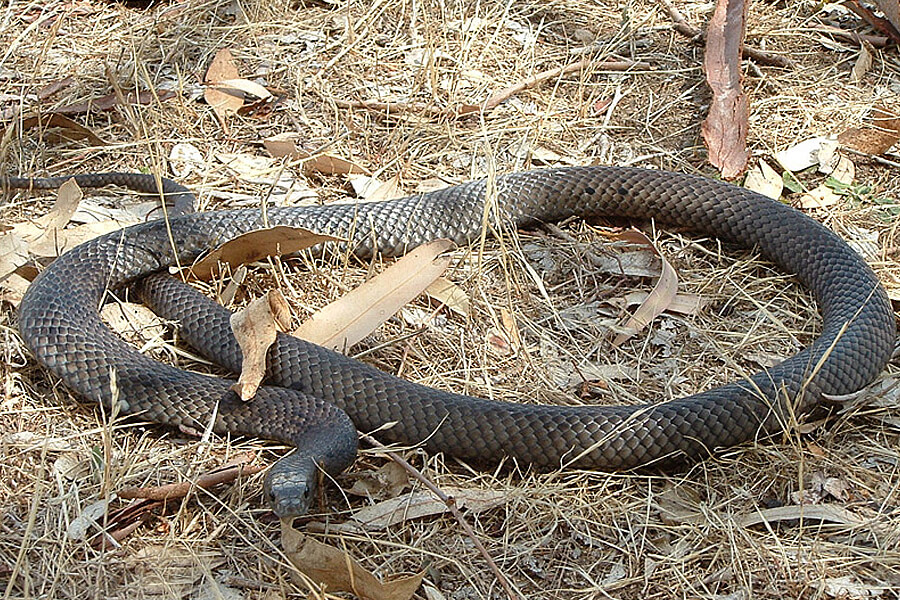Introduction
When it comes to poisonous snakes, Australia is home to some of one of the most remarkable and harmful species worldwide. Amongst these, the Tiger Snake attracts attention not just for its potent venom but also for its fascinating actions. Understanding the behavior of venomous snakes like the Tiger Serpent is vital for both wildlife fanatics and those living in areas where these serpents exist. This short article explores various facets of Tiger Serpent habits, habitat, recognition, precaution, and emergency treatment techniques in instance of a serpent bite.

Understanding the Actions of Venomous Snakes Like the Tiger Snake
The Tiger Snake, scientifically known as Notechis scutatus, is well-known for its aggressive nature when endangered. These serpents display a series of habits that can be quite various from their non-venomous counterparts.
Characteristics of Tiger Snakes
The Tiger Serpent is conveniently identifiable due to its distinct bands or stripes that resemble a tiger's markings. They can differ in shade from yellowish-brown to dark olive or black. This pigmentation offers not only as camouflage but also as a warning signal to possible predators.
Adaptability to Environment
One exceptional facet of their actions is their adaptability to different environments. Discovered primarily in coastal regions, marshes, and marshes across Australia and Tasmania, they can thrive in varied environments consisting of metropolitan locations.
Hunting Techniques
Tiger Serpents are ambush killers mainly feeding upon fish, frogs, and small creatures. They have keen sight and an intense sense of scent which assists them in finding victim effectively.
Venom Composition
Their poison includes neurotoxins that affect the nerves, leading to paralysis or death in smaller pets. For human beings, immediate medical focus is vital after a tiger serpent bite because of its potentially dangerous effects.
Natural Environment of Tiger Snakes
Preferred Locations
Understanding where these snakes reside sheds light on their behavioral patterns. The tiger serpent habitat includes:
- Coastal regions Swamps Grasslands Urban locations with abundant water sources
Seasonal Movements
During warmer months, Tiger Snakes are more energetic as they bask in sunlight or quest for food. In contrast, colder months see them retreating into hibernation sites.
Are Tiger Snakes Venomous?
Yes! The inquiry "are tiger snakes poisonous?" often occurs among those unfamiliar with this types. Their venom is considered one of the most dangerous amongst all serpent types worldwide.
Symptoms of a Tiger Serpent Bite
If bitten by a tiger serpent, signs and symptoms may include:
- Localized pain Swelling at the bite site Nausea and vomiting Sweating and confusion
Immediate medical aid is crucial as neglected attacks can cause severe wellness difficulties or perhaps death.
First Help for Serpent Bites: Quick Action Guide
Knowing just how to carry out emergency treatment for a serpent bite might save somebody's life. Here's what you ought to do:
Step 1: Continue to be Calm
Keeping calmness helps reduce heart rate which lowers poison spread.
Step 2: Debilitate the Impacted Area
Keep the impacted arm or leg still and listed below heart level if possible.
Step 3: Call Emergency Services
Always look for expert medical help right away after a snake bite.

First Aid for Serpent Bite Set Essentials
A well-appointed snake bite first aid kit must include:
- A compression bandage Antiseptic wipes A pair of scissors An ice bag
Safety Precautions: Avoiding Serpent Bites in Australia
Awareness Programs
Educating neighborhoods concerning neighborhood serpent types and their actions can substantially decrease experiences causing bites.

Avoiding Hazardous Areas
Staying far from lengthy lawn during warmer months minimizes call with serpents that may be relaxing or hunting.
Common Misconceptions Regarding Tiger Snakes
Many people think misunderstandings regarding the actions of tiger serpents cause unnecessary anxiety. Right here are some clarifications:
Myth 1: All Tigers Are Aggressive
Not all tiger snakes will certainly present aggression if left uninterrupted; many favor running away as opposed to confrontation.
Myth 2: They Chase Humans
Tiger snakes do not proactively Conservation and Education go after humans; they may strike when they feel threatened however will generally pull back if provided space.
Conservation Efforts Related to Poisonous Snakes
Conservation efforts concentrate on educating neighborhoods regarding shielding regional wildlife while reducing human-snake interactions.
Importance of Ecosystems
Understanding that venomous snakes play a necessary role in preserving ecological balance aids foster admiration instead of concern towards them.
FAQs Concerning Tiger Snakes
What needs to I do if I encounter a tiger snake?- Maintain distance and slowly retreat without sudden movements.
- While bites aren't incredibly typical due to recognition efforts, they still occur annually within Australia.
- Baby tiger snakes can provide complete doses of poison despite being smaller; therefore care is encouraged around them.
- They mostly take in frogs, fish, small animals like rodents, and various other reptiles.
- It's unlawful in many jurisdictions without appropriate licensing because of safety issues regarding their venom.
- Wear tough boots and remain on significant tracks; look before positioning hands or feet into concealed areas like rocks or logs.
Conclusion
Understanding the actions of venomous serpents https://privatebin.net/?b804c9cd3d51a006#AG8h7XqZqna4EAsyQF22CTF7FMi3WoAT92ft8CDbbBB1 like http://andrefxle428.wpsuo.com/preventing-serpent-bites-in-australia-tips-for-safe-outdoor-activities the Tiger Snake not just improves our expertise yet likewise promotes security recognition among those living near their habitats. From identifying their qualities, recognizing emergency treatment procedures following a bite, via engaging preservation initiatives-- every facet plays an important role in cultivating conjunction with these fascinating reptiles while valuing their place within our ecosystem.
As we grow our understanding via education and learning and experience, we add positively towards guaranteeing both human safety and wild animals preservation-- profiting all parties involved!